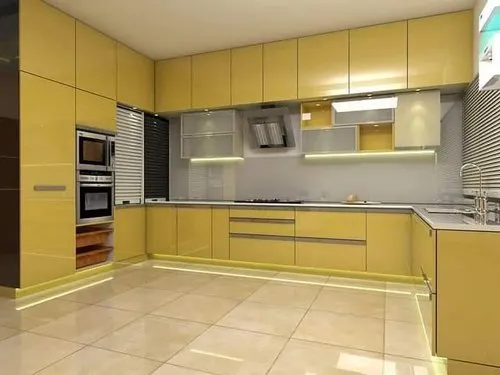A sagging roof can be a concerning issue for homeowners, raising questions about structural integrity, safety, and potential damage to the property. While some degree of settling and minor sagging may occur over time due to natural factors, significant or sudden roof sagging can indicate underlying problems that require prompt attention. In this article, we’ll explore the causes, risks, and solutions associated with sagging roofs to help homeowners better understand this issue and take appropriate action to address it.
Causes of Sagging Roofs:

Several factors can contribute to roof sagging, ranging from structural issues to environmental conditions. Understanding the root causes of roof sagging is essential for accurately diagnosing the problem and implementing effective solutions. Some common causes include:
- Structural Damage: Structural damage, such as weakened or deteriorated roof trusses, rafters, or support beams, can lead to roof sagging. This damage may result from age, exposure to moisture, insect infestation, or improper construction practices.
- Excessive Weight: The accumulation of heavy roofing materials, such as multiple layers of shingles, tiles, or slate, can place undue stress on the roof structure and cause sagging over time. Inadequate support or improper installation techniques can exacerbate this issue.
- Moisture Damage: Water infiltration and moisture buildup can weaken roof materials, compromise structural integrity, and contribute to sagging. Leaking roofs, improper ventilation, and condensation problems can all lead to moisture-related damage and subsequent roof sagging.
- Settling and Shifting: As a building settles over time, minor adjustments and movements may occur, leading to slight roof sagging. While some settling is normal, excessive settling or shifting can indicate underlying foundation issues that require attention.
- Environmental Factors: Extreme weather conditions, such as heavy snow loads, high winds, or seismic activity, can put stress on the roof structure and cause sagging. Additionally, exposure to prolonged sunlight, temperature fluctuations, and humidity levels can affect the integrity of roof materials and contribute to sagging over time.
Risks Associated with Sagging Roofs:
Sagging roofs pose various risks to homeowners, occupants, and the property itself. Ignoring or neglecting roof sagging can lead to worsening structural damage, safety hazards, and costly repairs. Some potential risks associated with sagging roofs include:
- Structural Instability: A sagging roof may indicate compromised structural integrity, putting the entire building at risk of collapse or serious damage. If left unaddressed, structural instability can pose significant safety hazards to occupants and require extensive repairs to rectify.
- Water Damage: Roof sagging can contribute to water pooling, ponding, and runoff issues, increasing the risk of leaks, moisture infiltration, and water damage to the interior of the property. Moisture-related problems, such as mold growth, rot, and decay, can compromise indoor air quality and pose health risks to occupants.
- Energy Efficiency: A sagging roof may affect the performance of the building envelope, leading to energy inefficiency and increased heating and cooling costs. Gaps, cracks, and leaks in the roof structure can allow conditioned air to escape and outdoor air to infiltrate, resulting in temperature fluctuations and reduced comfort levels indoors.
- Aesthetic Concerns: Beyond functional considerations, roof sagging can detract from the aesthetic appeal and curb appeal of the property. Visible signs of sagging, such as uneven rooflines, sagging rafters, or buckling shingles, can diminish the overall appearance of the home and lower its resale value.
Solutions for Sagging Roofs:
Addressing roof sagging requires a comprehensive approach that addresses underlying causes, mitigates risks, and restores structural integrity. Depending on the severity of the sagging and the specific issues involved, solutions may vary. Some common solutions for sagging roofs include:
- Structural Repairs: Repairing or replacing damaged or deteriorated roof trusses, rafters, or support beams is essential for restoring structural integrity and preventing further sagging. This may involve reinforcing existing components, installing additional support structures, or replacing compromised materials.
- Roof Reinforcement: Adding supplementary support systems, such as braces, beams, or purlins, can help distribute weight more evenly and reduce stress on the roof structure. Reinforcement measures may be necessary for addressing excessive loads, spanning longer distances, or supporting heavy roofing materials.
- Moisture Management: Addressing moisture-related issues, such as roof leaks, poor ventilation, or drainage problems, is critical for preventing further damage and minimizing the risk of future sagging. Properly sealing roof penetrations, improving ventilation systems, and ensuring adequate drainage can help mitigate moisture damage and preserve structural integrity.
- Roof Replacement: In cases of severe or irreparable damage, roof replacement may be necessary to address sagging and restore the integrity of the structure. Choosing durable, lightweight roofing materials and ensuring proper installation are essential for preventing future sagging and prolonging the lifespan of the roof.
- Professional Inspection and Maintenance: Regular inspections by qualified roofing professionals can help identify potential issues early and prevent minor problems from escalating into major repairs. Routine maintenance tasks, such as cleaning gutters, removing debris, and inspecting for signs of damage, can help prolong the life of the roof and minimize the risk of sagging.




